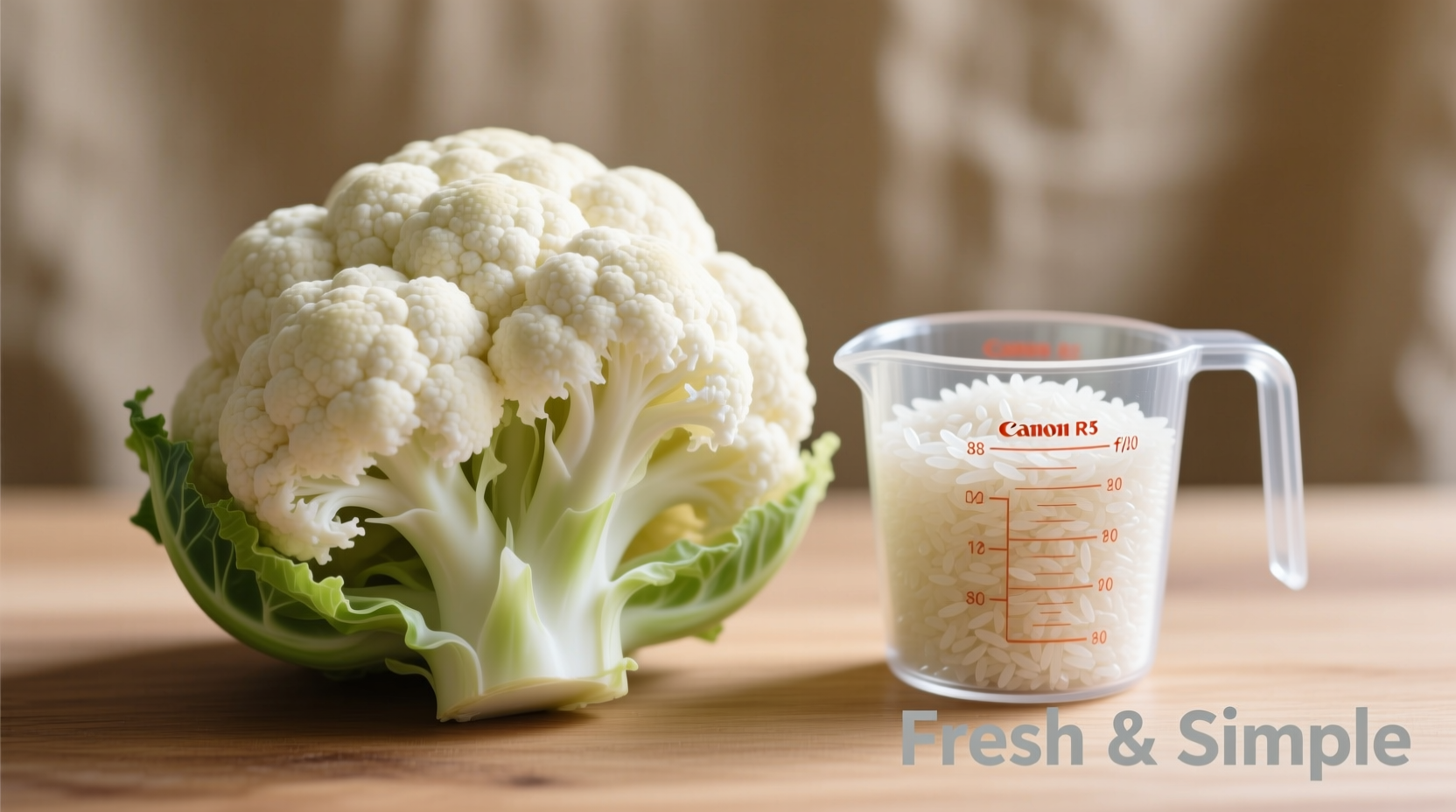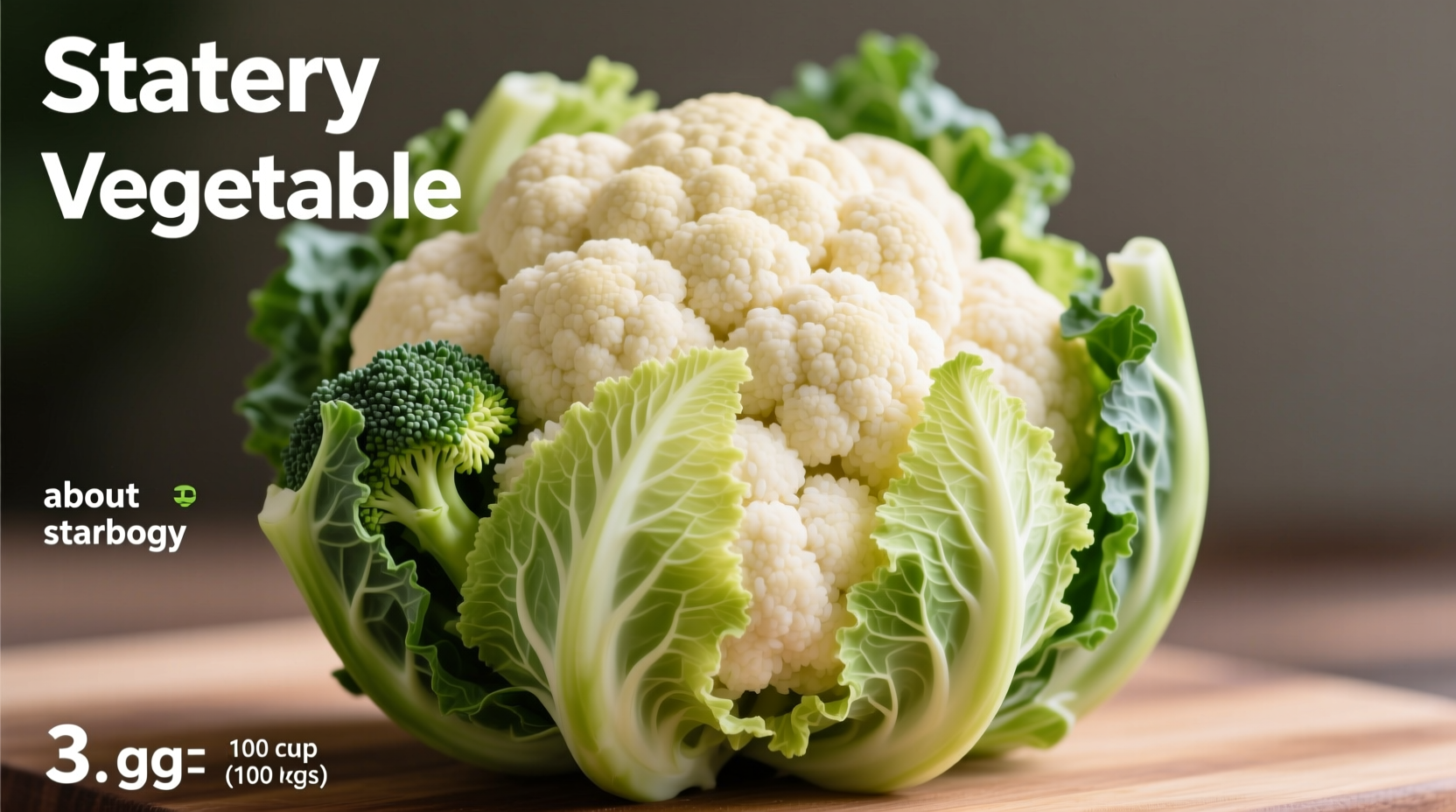Understanding vegetable classifications matters more than you might think. Whether you're managing blood sugar levels, following a keto diet, or simply trying to make smarter food choices, knowing whether cauliflower belongs in the starchy category directly impacts your meal planning and nutritional outcomes. Let's break down exactly where cauliflower stands in the vegetable spectrum and why it's become a superstar in modern healthy cooking.
What Defines a Starchy Vegetable?
Starchy vegetables contain significantly higher carbohydrate content than their non-starchy counterparts. According to the USDA FoodData Central, starchy vegetables typically provide 15 or more grams of carbohydrates per standard serving (about ½ cup cooked). These vegetables serve as substantial energy sources but require careful portion control for certain dietary needs.
Common starchy vegetables include:
- Potatoes (all varieties)
- Corn
- Peas
- Winter squash (butternut, acorn)
- Plantains
Cauliflower's Nutritional Reality Check
When evaluating is cauliflower a starchy vegetable, we need to examine its actual nutritional composition. One cup (100g) of raw cauliflower contains:
| Nutrient | Cauliflower (1 cup) | White Potato (1 cup) | Corn (1 cup) |
|---|---|---|---|
| Total Carbohydrates | 5g | 26g | 27g |
| Dietary Fiber | 2g | 2g | 4g |
| Net Carbs | 3g | 24g | 23g |
| Calories | 25 | 115 | 130 |
This nutritional comparison clearly demonstrates why cauliflower doesn't qualify as a starchy vegetable. With just 5 grams of total carbohydrates per serving—well below the 15g threshold—it firmly belongs in the non-starchy category alongside broccoli, asparagus, and leafy greens.

When Cauliflower Becomes a Starchy Substitute
While cauliflower itself isn't starchy, its culinary versatility creates some confusion. Many popular recipes transform cauliflower into starchy vegetable alternatives, which explains why people question its classification:
- Riced cauliflower—replaces traditional rice in low-carb diets
- Mashed cauliflower—serves as a lower-carb alternative to mashed potatoes
- Cauliflower pizza crust—provides a gluten-free, lower-carb pizza base
These creative applications leverage cauliflower's mild flavor and texture to mimic starchy foods, but they don't change cauliflower's fundamental nutritional profile. The American Diabetes Association specifically lists cauliflower as a non-starchy vegetable that people with diabetes can eat in unlimited quantities.
Dietary Context: Why Classification Matters
Understanding whether cauliflower is a starchy vegetable becomes crucial in specific dietary contexts:
For Low-Carb and Keto Dieters
Cauliflower's low net carb count (3g per cup) makes it keto-friendly, while starchy vegetables typically exceed keto limits. Registered dietitians often recommend cauliflower as a primary vegetable for maintaining ketosis.
For Diabetes Management
The Centers for Disease Control and Prevention (CDC) categorizes vegetables into starchy and non-starchy groups specifically for blood sugar management. Non-starchy vegetables like cauliflower have minimal impact on blood glucose levels compared to starchy options.
For Weight Management
With only 25 calories per cup versus 115 in potatoes, cauliflower provides greater volume for fewer calories—a principle supported by research published in the American Journal of Clinical Nutrition on volumetrics for weight control.
Practical Applications in Your Kitchen
Now that we've established cauliflower isn't a starchy vegetable, here's how to leverage this knowledge:
Smart Swaps for Common Starchy Foods
- Replace mashed potatoes with mashed cauliflower (saves 90 calories and 21g carbs per cup)
- Use cauliflower rice instead of white rice (reduces carbs by 90%)
- Try cauliflower pizza crust for a lower-carb alternative (typically 5-8g net carbs versus 30g+ in traditional crust)
Maximizing Nutritional Benefits
To preserve cauliflower's nutrients while preparing it:
- Steam rather than boil to retain water-soluble vitamins
- Add a pinch of turmeric when cooking to boost absorption of antioxidants
- Pair with healthy fats like olive oil to enhance absorption of fat-soluble vitamins
Common Misconceptions Clarified
Several factors contribute to the confusion about whether cauliflower is a starchy vegetable:
- Texture similarity—when processed, cauliflower can mimic starchy foods' texture
- Recipe positioning—many recipes market cauliflower as "starchy vegetable replacement"
- Color confusion—white color resembles potatoes and other starchy vegetables
Remember: preparation method doesn't change a vegetable's fundamental nutritional classification. Whether raw, roasted, or riced, cauliflower remains nutritionally a non-starchy vegetable.
When Cauliflower Might Behave Like a Starchy Vegetable
While cauliflower itself isn't starchy, certain preparation methods can increase its glycemic impact:
- Deep-fried cauliflower—adds significant calories and carbohydrates from breading
- Cauliflower with high-sugar sauces—like teriyaki or sweet chili
- Processed cauliflower products—some store-bought cauliflower rice contains added starches
Always check ingredient labels on pre-processed cauliflower products, as some manufacturers add potato starch or other thickeners that increase the carb content significantly.











 浙公网安备
33010002000092号
浙公网安备
33010002000092号 浙B2-20120091-4
浙B2-20120091-4